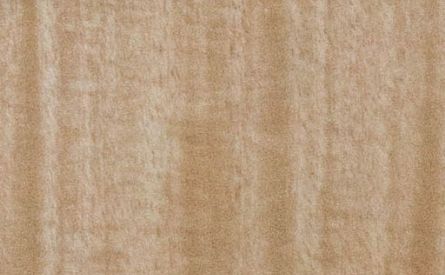Gmelina
Melina / Gmelina Arborea

Local Names
Distribution & Tree
Wood Appearance
Processing Properties
Strength & Durability
Wood Uses
Ecological & Social Importance
Gmelina is a useful agroforestry species. It coppices well, tolerates browsing in the understory by livestock, and is resistant to many pests. It’s a light-demanding species suitable for planting on pastures and forest edges. It is a useful firewood species and its leaves and fruit can be used as fodder. The wood ash and fruit yield a persistent yellow dye. In Southeast Asia, gmelina is employed in the traditional taungya agroforestry system intercropped with peanut, cashew, tobacco, maize and beans.
| Reference Species | ||||
| Technical Characteristics | Gmelina | American Elm | Loblolly Pine | |
| Density | kg/m3 | 464 | 560 | 570 |
| Janka Hardness | kgf | 363 | 376 | 313 |
| Bending Stiffness (Modulus of Elasticity) | GPa | 6.8 | 9.2 | 12.3 |
| Bending Strength (Modulus of Rupture) | MPa | 50.0 | 81.4 | 88.3 |
| Crushing Strength | MPa | 29.2 | 38.1 | 49.2 |
| Shrinkage, Radial | % | 2.8% | 4.2% | 4.8% |
| Shrinkage, Tangential | % | 5.5% | 9.5% | 7.4% |
| Shrinkage, Volumetric | % | 8.4% | 14.6% | 12.3% |
| T/R Ratio | 2.0 | 2.3 | 1.5 | |
| Values determined at 12% humidity - Provided for reference only | ||||
|---|---|---|---|---|
DENSITY
JANKA HARDNESS
BENDING STIFFNESS
BENDING STRENGTH
CRUSHING STRENGTH
SHRINKAGE
Values are for reference only and cannot be guaranteed. Wood is a natural material and physical and mechanical properties may vary depending on age, genetics, and other factors. We encourage customers to consult the references provided in the bibliography. For further explanations of wood’s key technical characteristics, an excellent resource is the Wood Database with articles on Density (average dried weight); Janka hardness; Elastic Modulus; Rupture Modulus; Crushing Strength; Radial, Tangential and Volumetric Shrinkage.






